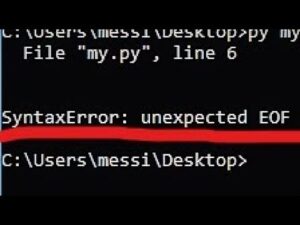Content

A contra-asset decreases the dollar amount of the asset with which it is paired. In AFDA’s case, it is paired with accounts receivable and reduces its value on the balance sheet. Allowance for doubtful accounts fall under the contra assets section in the balance sheet, meaning it can either be zero or negative. The Pareto analysis method analyzes only large accounts that total up to 80% of the overall receivables. Businesses can then identify the most important and high-risk accounts and get an approximate idea of which customers might default.
When an account that has been written off is collected, cash is increased and the net amount of accounts receivable is decreased. Typically, the calculation is based on an assumption of a relationship between the expense and credit sales for the year. Most accountants take the position that the expense is incurred in order to increase sales and, therefore, should be reported in the same time period as those sales if cause and effect are to be related.
What is the difference between uncollectible accounts expense and bad debt?
The remaining amount from the bad debt expense account (the portion of the $10,000 that is never paid) will show up on a company’s income statement. Doubtful accounts represent the amount of money deemed to be uncollectible by a vendor. Adding an allowance for doubtful accounts to a company’s balance sheet is particularly important because it allows a company’s management to get a more accurate picture of its total assets. To record the bad debt expenses, you must debit bad debt expense and a credit allowance for doubtful accounts. An allowance for doubtful accounts is established based on an estimated figure.
- This approach allows the reader to calculate the proportion of the total group that is believed to be collectible or uncollectible.
- Bad debt expense is an income statement account and carries a debit balance.
- Your accounting books should reflect how much money you have at your business.
- You can use your AR aging report to help you calculate AFDA by applying an expected default rate to each aging bucket listed in the report.
- After the write-off, the customer account is considered closed, and the company may not make any further attempts to collect the debt.
A write-off, on the other hand, is the actual removal of an account receivable from the balance sheet when it is determined to be uncollectible. A write-off is a specific identification of an account receivable that is bad. We are essentially using the provision for bad debt or the allowance for doubtful debt kept aside earlier for these write offs. After the write-off, the customer account is considered closed, and the company may not make any further attempts to collect the debt. The statement of cash flows shows how changes in balance sheet accounts and income affect cash and cash equivalents.
US: Federal Reserve Keeps Rates Stable
A company uses this account to record how many accounts receivable it thinks will be lost. Bad debt expense is an income statement account that records the amount of money written off as uncollectible. Therefore, like all expense accounts, the bad debt expense or provisions for bad debt expense shows up in the income statement.
Most businesses will set up their allowance for bad debts using some form of the percentage of bad debt formula. The following list describes aspects of either the allowance method or the direct write-off method to account for bad debts. For each item listed, indicate if the statement best describes either the allowance method or the direct write-off method. The aging of receivables method and the percentage of credit sales method are the most commonly used methods.
PERCENTAGE OF SALES METHOD
Utilizing an allowance for doubtful accounts if a customer doesn’t pay also requires more internal resources to manage the risk. Use the comparison chart below to see how much you might be costing your business. One common area where companies fail to evolve is in continuing to own their own risk when it comes to insuring their dummy accounts receivable. In these instances, Allowance For Doubtful Accounts And Bad Debt Expenses business owners agree to accept the loss of any unpaid invoice amounts, plus the full costs required to manage their internal credit grading processes. These businesses use a bad debt reserve to offset losses, research customers of their own and own all the risk internally. To predict your company’s bad debts, create an allowance for doubtful accounts entry.
For more information, see our training modules,Understanding Financial StatementsandThe Balance Sheetor read our eBook,Understanding Financial Statements. The estimation is typically based on credit sales only, not total sales . In this example, assume that https://quick-bookkeeping.net/ any credit card sales that are uncollectible are the responsibility of the credit card company. It may be obvious intuitively, but, by definition, a cash sale cannot become a bad debt, assuming that the cash payment did not entail counterfeit currency.
You’ll notice that because of this, the allowance for doubtful accounts increases. A company can further adjust the balance by following the entry under the “Adjusting the Allowance” section above. Because the allowance for doubtful accounts is established in the same accounting period as the original sale, an entity does not know for certain which exact receivables will be paid and which will default. Therefore, generally accepted accounting principles dictate that the allowance must be established in the same accounting period as the sale, but can be based on an anticipated or estimated figure. The allowance can accumulate across accounting periods and may be adjusted based on the balance in the account. The percentage of sales method and the accounts receivable aging method are the two most common ways to estimate uncollectible accounts.

Under this approach, businesses find the estimated value of bad debts by calculating bad debts as a percentage of the accounts receivable balance. The bad debts are the losses that the business suffers because it did not receive immediate payment for the sold goods and provided services. It’s recorded in the financial statements as a provision for credit losses. With the percentage of sales method, you will estimate the number of invoices you are unlikely to collect using historical default data.
